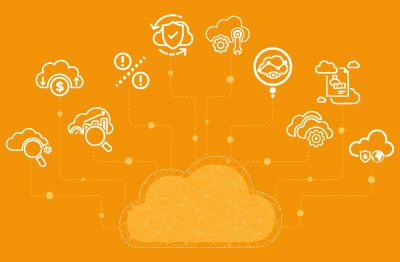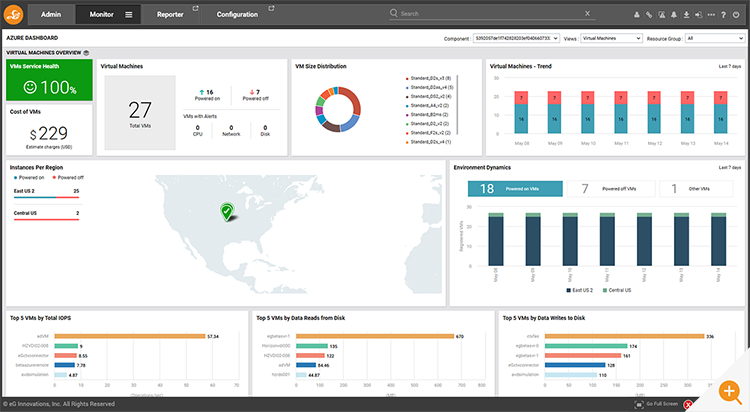Cloud Monitoring and It’s Importance
Most organizations are moving applications and workloads to the cloud. As more organizations migrate to the cloud, effective cloud monitoring becomes essential to ensure performance, security, and cost control in dynamic, distributed environments.
Our APM survey found that 88% of organizations had some form of cloud technology deployed already. At the same time, there are several misconceptions about the cloud. A common one is the belief that monitoring tools are unnecessary because the cloud provider handles all performance-related needs. This is a myth—cloud provider SLAs primarily focus on infrastructure availability, not on application performance or end-user experience.
Why do we need Cloud Monitoring?
As organizations increasingly rely on cloud-based services like SaaS, PaaS, and IaaS, cloud monitoring has become essential for maintaining visibility and control over dynamic environments. It empowers IT teams by providing real-time insights into system performance, reliability, and various other metrics, enabling organizations to optimize their IT performance.
From tracking performance indicators like latency and memory usage to monitoring uptime and access controls, cloud monitoring tools consolidate critical insights into a centralized dashboard. This not only simplifies data analysis but also ensures that key stakeholders can quickly act on emerging issues or trends.
In short, deeper visibility, driven by data-based approach, allows organizations to:
- Enhance Performance: Identify performance bottlenecks, optimize resource usage, and ensure applications run smoothly.
- Resolve Issue Proactively: Detect anomalies and address potential problems before they impact users.
- Optimize Cost: Track resource usage and spending trends to avoid over-provisioning and manage cloud budgets effectively.
- Faster Detect Root Cause Analysis: Correlate metrics across layers (infrastructure, app, user) to accelerate troubleshooting and reduce downtime.
Feature-Set Requirements of Cloud Monitoring Tools
You may ask yourself, “what monitoring capabilities do I need in the cloud?” and “can the same tools used on-premises be deployed on the cloud?” To answer these questions, we have published a new technical whitepaper – “Top 10 Requirements of Cloud Monitoring Tools.” Designed for businesses looking to migrate applications and services to the cloud from on-premises infrastructures, this whitepaper covers key criteria that monitoring and diagnostic tools should meet. Organizations can incorporate these requirements into their cloud strategy, use them to evaluate different cloud monitoring tools and reduce cloud costs to set and quantify KPIs and avoid cloud vendor lock-in.
In this whitepaper, we cover detailed requirements and considerations for cloud monitoring and troubleshooting in 10 areas:
- Multi-cloud support
- Support for hybrid cloud deployments
- Monitor all the cloud services your organization uses
- Monitor the usage and performance of cloud services with analytics for automatic problem detection
- Monitor the digital user experience for different workloads
- Provide clear demarcation of problems
- Support cloud technologies like auto-scaling and dynamic microservices with auto-deployment, auto-discovery and auto-configuration capabilities
- Ensure data security, compliance, and governance
- Provide a predictable billing model for monitoring
- Monitor cloud billing costs and provide cost optimization analysis
Also included are statistics and data that will help those drafting cloud migration plans, formulate context and justifications for their strategies. This is a technical whitepaper and focuses heavily on the technical challenges and considerations that will influence and define workflows in cloud deployments. Our earlier article on Cloud Migration Best Practices – Top 10 Steps for Migration to the Cloud | eG Innovations may suit those looking to get buy-in from the various stakeholders involved in implementing a move to the cloud.
eG Enterprise is an Observability solution for Modern IT. Monitor digital workspaces, web applications, SaaS services, cloud and containers from a single pane of glass.
eG Enterprise is an Observability solution for Modern IT. Monitor digital workspaces,
web applications, SaaS services, cloud and containers from a single pane of glass.
Learn More
- If you are looking for data on cloud adoption trends – you might be interested in the survey results from 900+ IT professionals summarized in a joint report with the DevOps Institute available here: Cloud Technology Adoption Trends
- For those looking to use AWS (Amazon Web Service), the article “Cloud Migration Strategy: A Framework for Cloud Adoption and Target Cloud Models” may be of interest
- An overview of what eG Innovations can offer Cloud adopters with: Hybrid Cloud Monitoring & Cloud Monitoring Tools
- eG Enterprise uses machine learning as part of its AIOps platform to automatically identify the root cause of IT issues—right out of the box. This is especially valuable in fast-changing, cloud-based environments. To learn more about evaluating AIOps in IT tools, see: AIOps Solutions and Strategies for IT Management
- For those skeptical about cloud performance monitoring, we’ve put together a white paper that breaks down the Top 6 Myths—highlighting the gap between vendor promises and what’s truly achievable in the cloud. Read it here: Top 6 Myths of Cloud Performance Monitoring (eginnovations.com)









